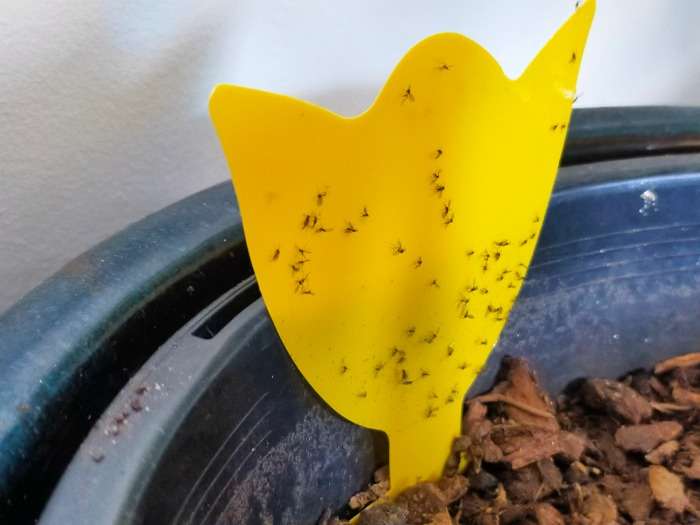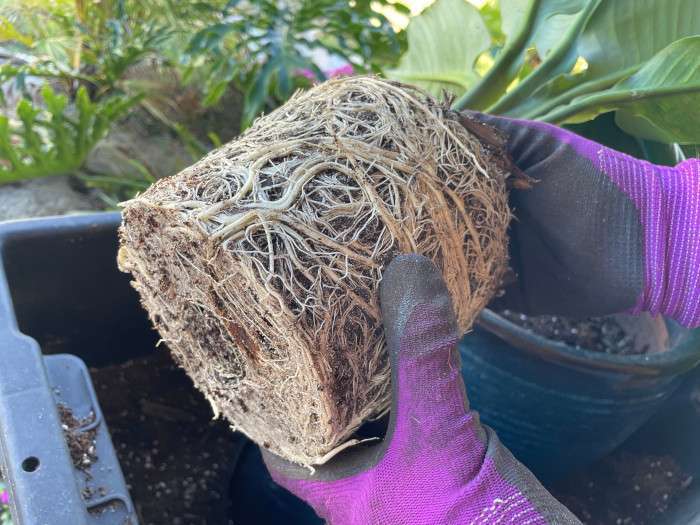I’ve been keeping indoor plants for quite a while now, and through plenty of trial and error, I’ve had my fair share of plants that didn’t make it. Sometimes, you’ve got a darker spot in your house that needs filling, but most plants just won’t survive there.
If you’ve ever had this problem, you’re not alone. Today, I want to talk about some tall indoor plants for low light spots that will be just fine in those conditions, adding height and greenery to your space.
1. Ficus elastica ‘Rubber Tree‘
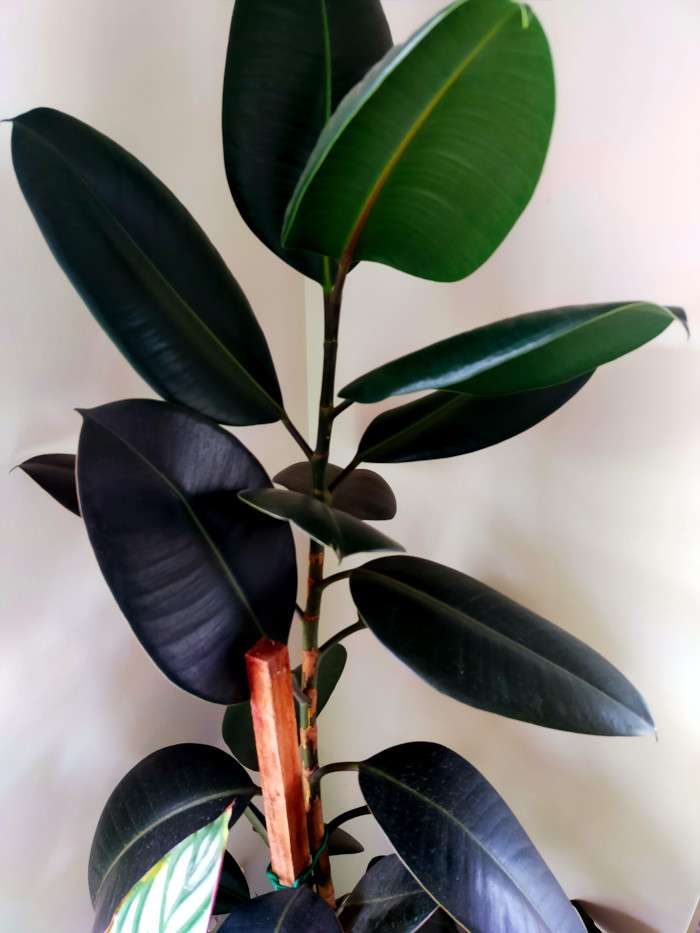
Rubber Trees are classic indoor plants, and the burgundy variety, in particular, is very tolerant of darker spots. I’ve been growing and propagating them for many years, so my house has a few of them scattered around.
If height is what you’re after, this plant can grow quite tall, even in shady spots, though it will do so at a slower rate compared to brighter locations.
Key Characteristics
- Height: 1.5-2m (5-6ft)
- Light: Thrives in bright, indirect light but will do fine in shadier spots
- Watering: Low to moderate; prefers soil to dry out between waterings
- Soil: Well-drained, loamy soil or chunky mix
- Toxicity: Toxic to pets and humans if ingested, sap can irritate skin
2. Chamaedorea elegans ‘Parlour Palm’
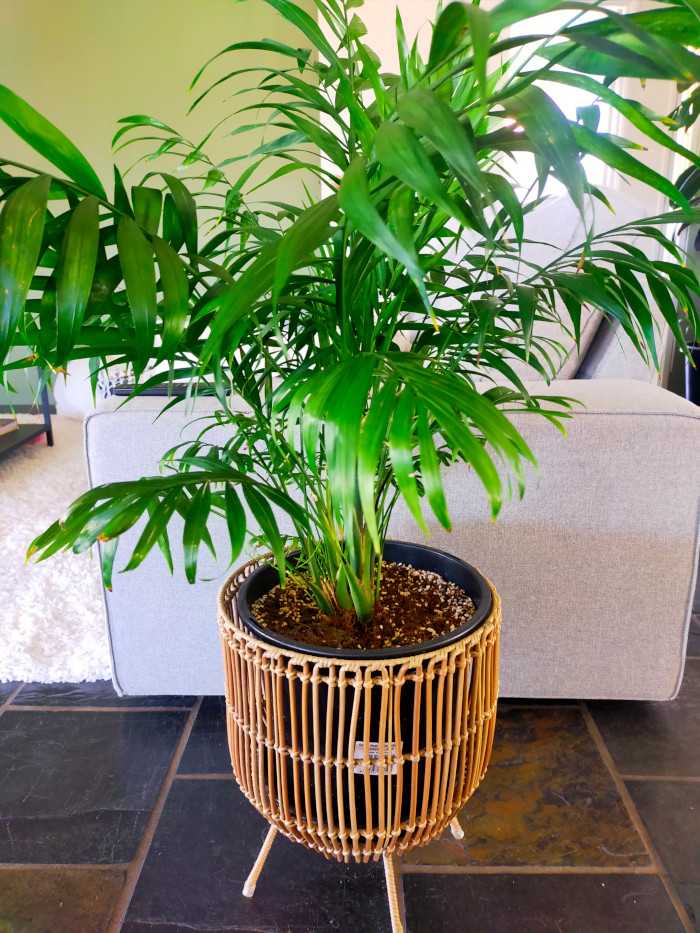
The Parlour Palm is one of the few palms that can actually do well in shady locations, as most palms typically require bright light. If you’re looking for a palm to bring some height indoors, this is my top choice.
Since these plants like to dry out a bit between waterings, I’ve been having better luck lately using a chunkier mix. It helps with drainage and keeps the soil from staying too wet, which is a big plus in darker spots.
Key Characteristics
- Height: 1.2-1.5m (4-5ft)
- Light: Thrives in low to moderate light; can tolerate shadier spots
- Watering: Moderate; allow soil to dry slightly between waterings
- Soil: Well-drained, loamy soil or chunky mix
- Toxicity: Non-toxic to pets and humans
3. Rhapis excelsa ‘Lady Palm’

Another palm on the list (I really like palms), the Lady Palm is very slow-growing, and even more so indoors. So, it’s worth considering a mature plant if possible.
That said, it’s one of the palms that tolerates shady spots much better than most others. Plus, its unique leaf shape makes it an interesting focal point in any room.
Key Characteristics
- Height: 1.2-1.8m (4-6ft)
- Light: Prefers bright, indirect light but can tolerate low light
- Watering: Moderate; allow the soil to dry slightly between waterings
- Soil: Well-drained, loamy soil
- Toxicity: Non-toxic to pets and humans
4. Ficus benjamina ‘danielle’ (weeping fig)

The Weeping Fig is that classic office plant you’ll find in just about every building—and for good reason. It’s low maintenance and can handle a variety of conditions, including lower light. Its bushy growth makes it a great choice if you’re looking to fill a space while adding some height.
Key Characteristics
- Height: 1.8-2.4m (6-8ft)
- Light: Prefers bright, indirect light but can tolerate low light
- Watering: Moderate; allow the soil to dry out slightly between waterings
- Soil: Well-drained, slightly acidic soil
- Toxicity: Toxic to pets and humans if ingested, sap irritates skin
5. Zamioculcas zamiifolia ‘ZZ Plant’
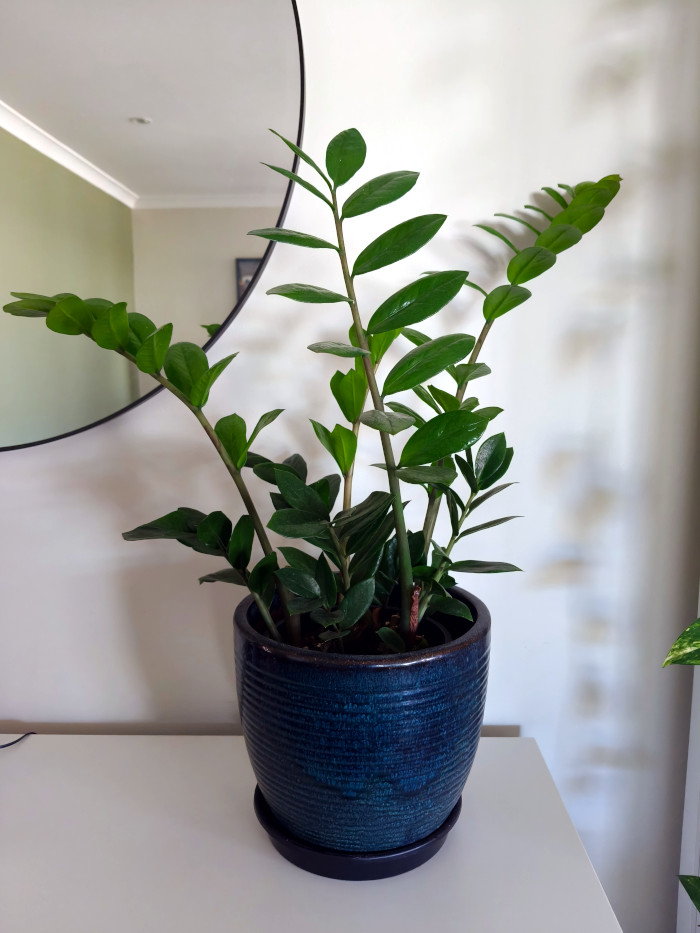
The ZZ Plant has really grown on me. I wasn’t a fan at first, but as it gets larger, it actually becomes quite bushy. Its leaves bring a unique texture and shape to any space. It’s also on my list of very hardy, low maintenance indoor plants and it does well both in bright light and darker spots.
Mine is currently about 5 meters from any window, and it’s doing just fine.
Key Characteristics
- Height: 0.9-1.2m (3-4ft)
- Light: Tolerates low light but prefers bright, indirect light
- Watering: Low to moderate; allow the soil to dry out completely between waterings
- Soil: Well-drained, loamy soil
- Toxicity: Toxic to pets and humans if ingested
6. Dracaena Marginata ‘Dragon Tree’

The Dragon Tree is quite unique among indoor plants. In its early life, it grows with a spindly, thin trunk and narrow leaves, eventually forming a larger mass later in life.
When grown indoors, you’ll likely only experience the spindly stage, but it still makes for a cool and interesting look. It can grow quite tall, adding a nice touch to your indoor space.
Key Characteristics
- Height: 1.2-2m (4-6ft)
- Light: Tolerates low light but thrives in bright, indirect light
- Watering: Low to moderate; allow the topsoil to dry out between waterings
- Soil: Well-drained, sandy or loamy soil
- Toxicity: Toxic to pets and humans if ingested
7. Spathiphyllum spp. ‘Peace Lily’
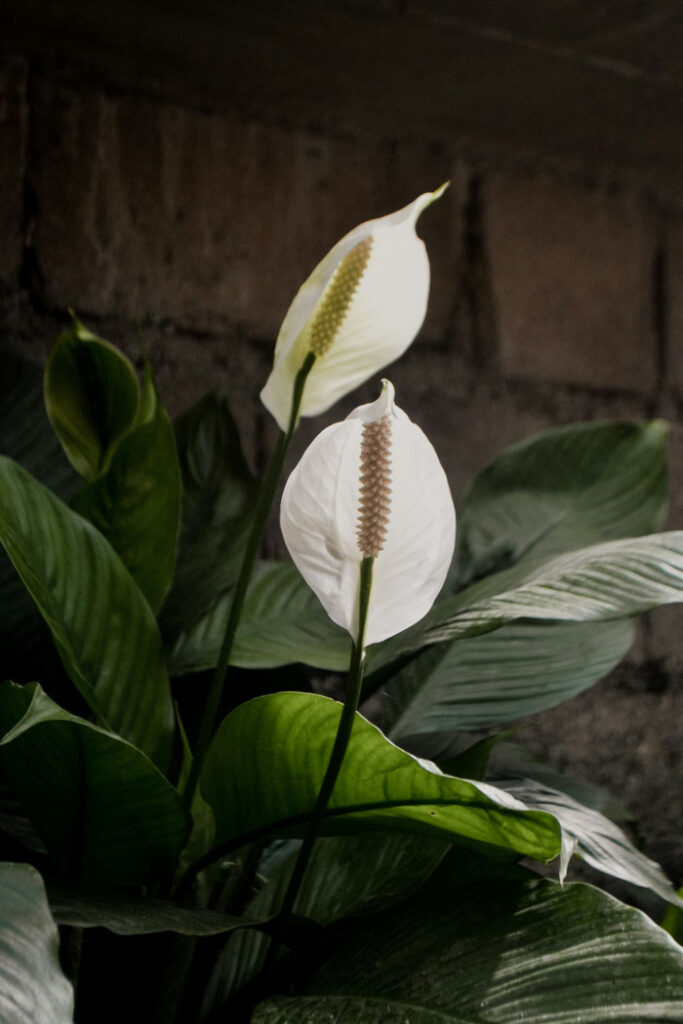
Everybody knows the peace lily, and it definitely deserves a spot on the list. While they definitely do better in brighter light, they can still hold their own in darker spots, especially if you already have a larger, more mature plant.
You’re less likely to get flowers in darker spots, but honestly, I actually like that. I’m more into the foliage than the flowers anyway.
Key Characteristics
- Height: 0.5-1m (1.5-3ft)
- Light: Tolerates low light but thrives in bright, indirect light
- Watering: Moderate; keep soil consistently moist but avoid overwatering
- Soil: Well-drained, loamy soil
- Toxicity: Toxic to pets and humans if ingested
8. Aspidistra elatior ‘Cast Iron Plant’
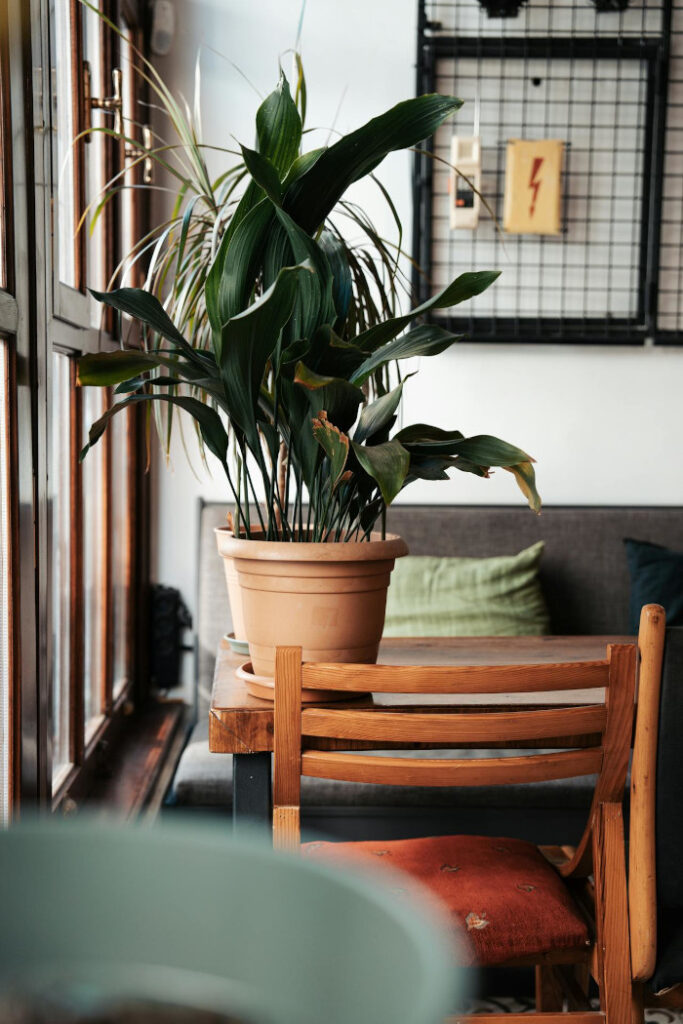
The cast iron plant is another foliage plant with a nice upright growth habit, which is great when you want to add some height to a darker spot—something most other plants just can’t handle.
I find their growth to be pretty slow, even in the best conditions, so it’s a good idea to go for a mature plant if you’re placing it in a darker corner.
Key Characteristics
- Height: 0.6-0.9m (2-3ft)
- Light: Tolerates low light and thrives in shadier spots
- Watering: Low to moderate; allow the soil to dry out slightly between waterings
- Soil: Well-drained, loamy soil
- Toxicity: Toxic to pets and humans if ingested
Bonus: Philodendron bipinnatifidum ‘Tree Philodendron’

It’s a bit of a surprise, but I find tree philodendrons to actually do quite well in darker spots. Even in low light, they still grow large leaves with an interesting shape.
They’re also pretty low maintenance—I never get any pests or disease on these, so they’re a great option if you have some space for them to spread out.
Key Characteristics
- Height: 1.5-2.4m (5-8ft)
- Light: Prefers bright, indirect light but can tolerate low light
- Watering: Moderate; keep the soil slightly moist, but allow the top inch to dry out between waterings
- Soil: Well-drained, rich, and loamy soil or chunky mix
- Toxicity: Toxic to pets and humans if ingested
Conclusion
Finding plants that do well in darker spots can be a challenge, but any of the plants on this list should be a solid choice. While plants always grow best in brighter light, sometimes we just have to work with what we’ve got.
In shadier spots, plants won’t dry out as quickly, meaning you’ll need to water them less often. However, this also makes them more susceptible to pests like fungus gnats. Keep these things in mind, and you’ll be well on your way to adding some life and character to those dim corners.
